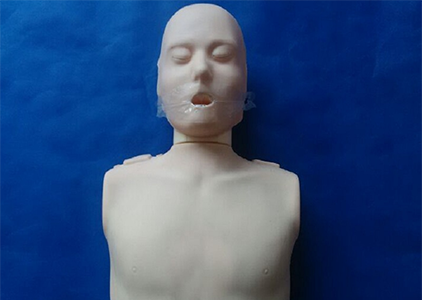
With the advancement of medical technology and the increasing complexity of surgery, the skill requirements of surgeons are becoming higher and higher. As an essential basic skill in surgery, knotting requires the surgeon to be able to complete it quickly and accurately in the tense and complex surgical environment. As an innovative training tool, the new knotted training model has become an important means to improve the skills of surgeons. Whether it can help students cope with complex surgical situations has become a hot topic in the field of medical education.
Accurate simulation and complex situations

The new knotted training model is designed to simulate a variety of complex situations during surgery, including different types of tissues, changes in anatomical structure, and various interfering factors during surgery. Compared with the traditional training model, the new knotted training model can provide more diversified operational feedback, such as simulating tissue tension, vascular response, etc., to help students cope with different clinical challenges. Industry experts point out that being able to train in diverse and complex scenarios can significantly improve students' emergency response capabilities. According to one data study, participants trained with these new models improved their accuracy in complex surgeries by about 35 percent.
Market trends and needs
With the popularity of minimally invasive surgery and high-difficulty surgery, surgeons need not only to be skilled in operation skills, but also to make quick judgments and decisions in high-pressure situations. As a result, there is a growing demand for training equipment that can improve students' ability to cope with complex surgical situations. The new knotted training model came into being and has become an indispensable training tool in surgical education. These models, through an adjustable difficulty and feedback system, provide students with the opportunity to practice repeatedly, thereby enhancing their operational confidence in actual surgery.
Data support and learning effect
The new knotting training model is equipped with an intelligent feedback system, which can monitor students' knotting process in real time, and provide specific operational data and improvement suggestions. This data helps students understand their operational weaknesses and improve them, thereby enhancing their learning. According to an industry survey, participants trained with a new knot-tying training model have a 40 percent better success rate in complex surgical situations than traditional training methods. This data-supported training approach enables participants to adapt quickly and accurately in the changing surgical environment.
conclusion
The new knot-tying training model can not only help students master the basic knot-tying skills effectively, but also improve the students' adaptability in clinical operation by simulating complex surgical situations. As the market demand for high-quality medical education tools increases, the application of these training models in surgical training will become more and more widespread. The data show that this model can significantly improve the performance of students in complex surgeries, so it is undoubtedly an important tool to improve the surgical skills of surgeons and cope with complex surgical situations.







Sophie Asveld
February 14, 2019
Email is a crucial channel in any marketing mix, and never has this been truer than for today’s entrepreneur. Curious what to say.
Sophie Asveld
February 14, 2019
Email is a crucial channel in any marketing mix, and never has this been truer than for today’s entrepreneur. Curious what to say.